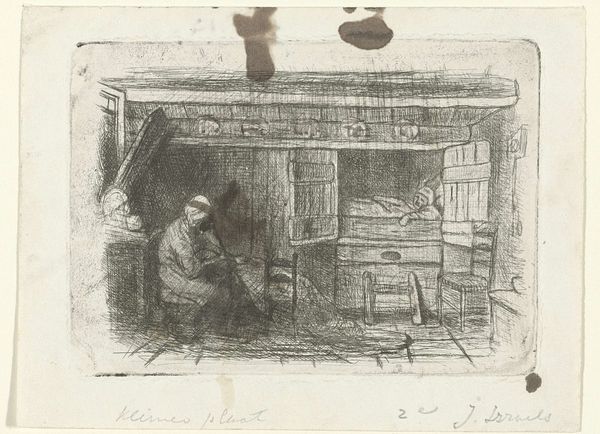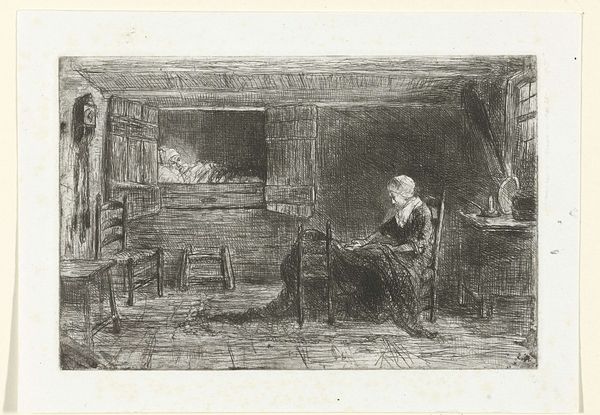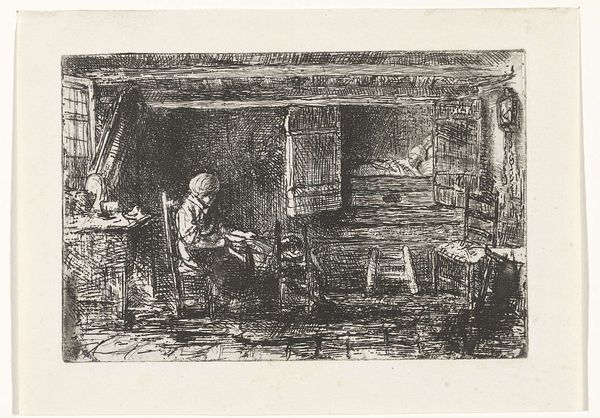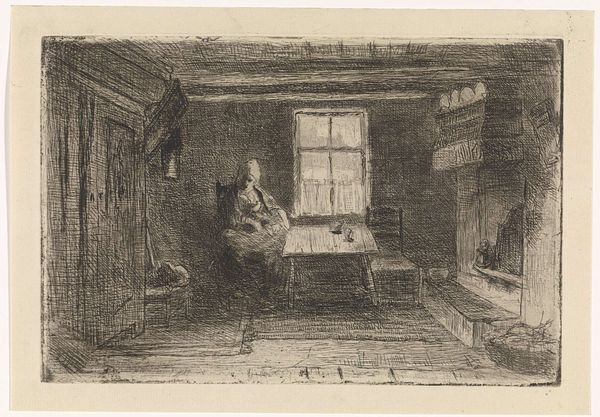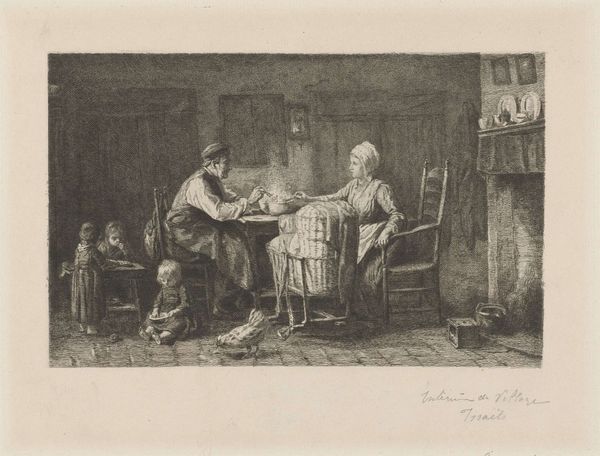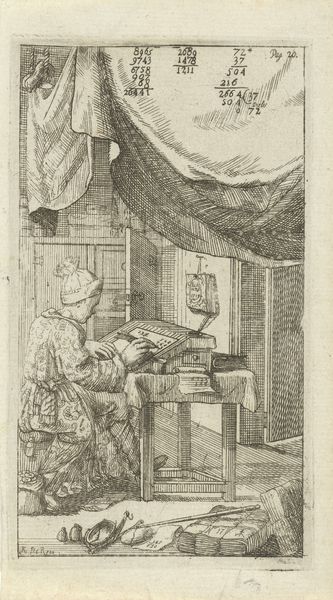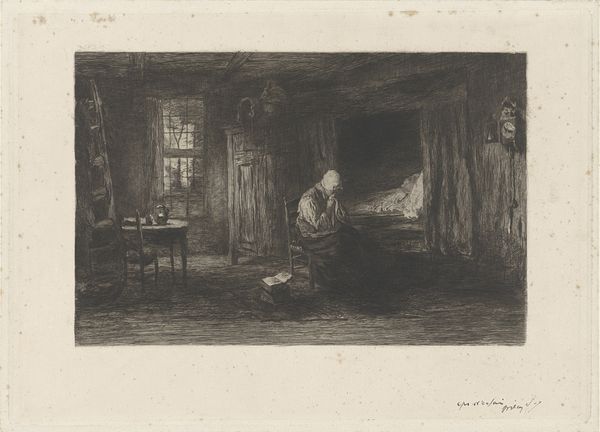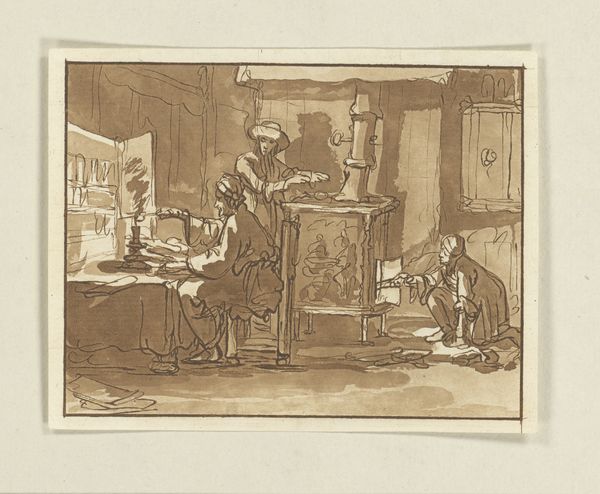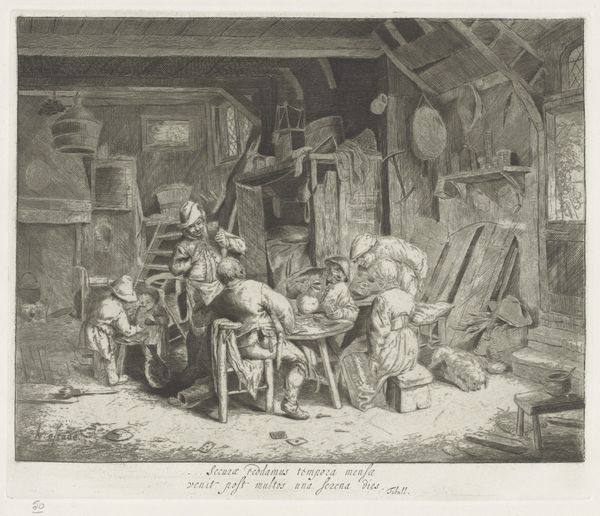
drawing, ink
#
portrait
#
drawing
#
ink
#
genre-painting
#
realism
Dimensions: height 97 mm, width 135 mm
Copyright: Rijks Museum: Open Domain
Editor: Here we have Jozef Israëls' "Two Figures in an Interior," an ink drawing likely made between 1835 and 1888. I’m immediately struck by the quiet domesticity, yet there’s a real starkness in the lines, and such cramped quarters. How do you read the mood of this piece? Curator: Ah, yes. Jozef Israëls had a real gift for capturing these moments of quiet contemplation. It’s as if he invites us into this shared space, with the textures scratching their story. You get this deep sense of their lived-in experience. I wonder, though, are we sure it is so "stark"? The lighting, don't you think, evokes the Dutch Masters and their ability to imbue humble settings with, maybe not glamour, but something equally significant. What feelings arise when you focus on her hands at work? Editor: That's a great point about the lighting. Focusing on her hands, I notice the intense concentration, perhaps even weariness. It emphasizes her labor but almost as if in secret. I mean the space is pretty intimate as it is, right? But who is the figure behind her? It looks like she is working while someone sleeps! Curator: Indeed, isn't it suggestive that our viewpoint on this is both intimately knowing, and obscure? It gives me this sensation that these types of human labors go on every day, unbeknownst to us. And someone always watches. There's an unsung quality, I think. Consider also the items placed high, upon the rack - the crockery and the pans – the things this lady maintains! Now, do you read weariness? I ask because it appears a part of her life, not a fleeting expression, if that makes any sense? Editor: It does. The whole scene has a powerful sense of acceptance. Maybe not weariness, then, but just…life. So I was definitely focusing too much on my own feelings upon approaching this image rather than really considering its themes. I appreciate your thoughts! Curator: And I, yours! Art can always teach us that no interpretation is really “wrong,” but that all of them should, perhaps, make space for something better.
Comments
No comments
Be the first to comment and join the conversation on the ultimate creative platform.

